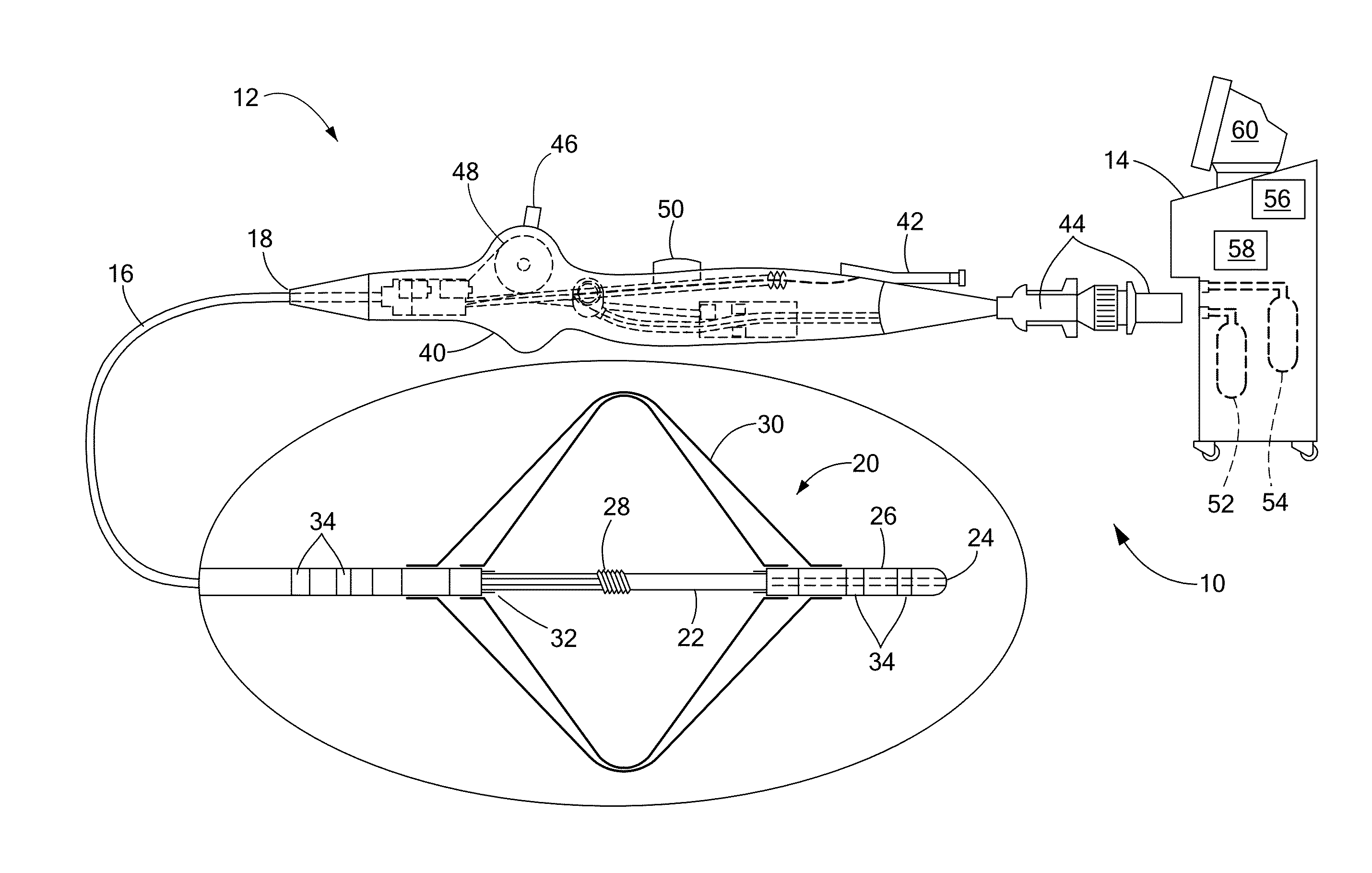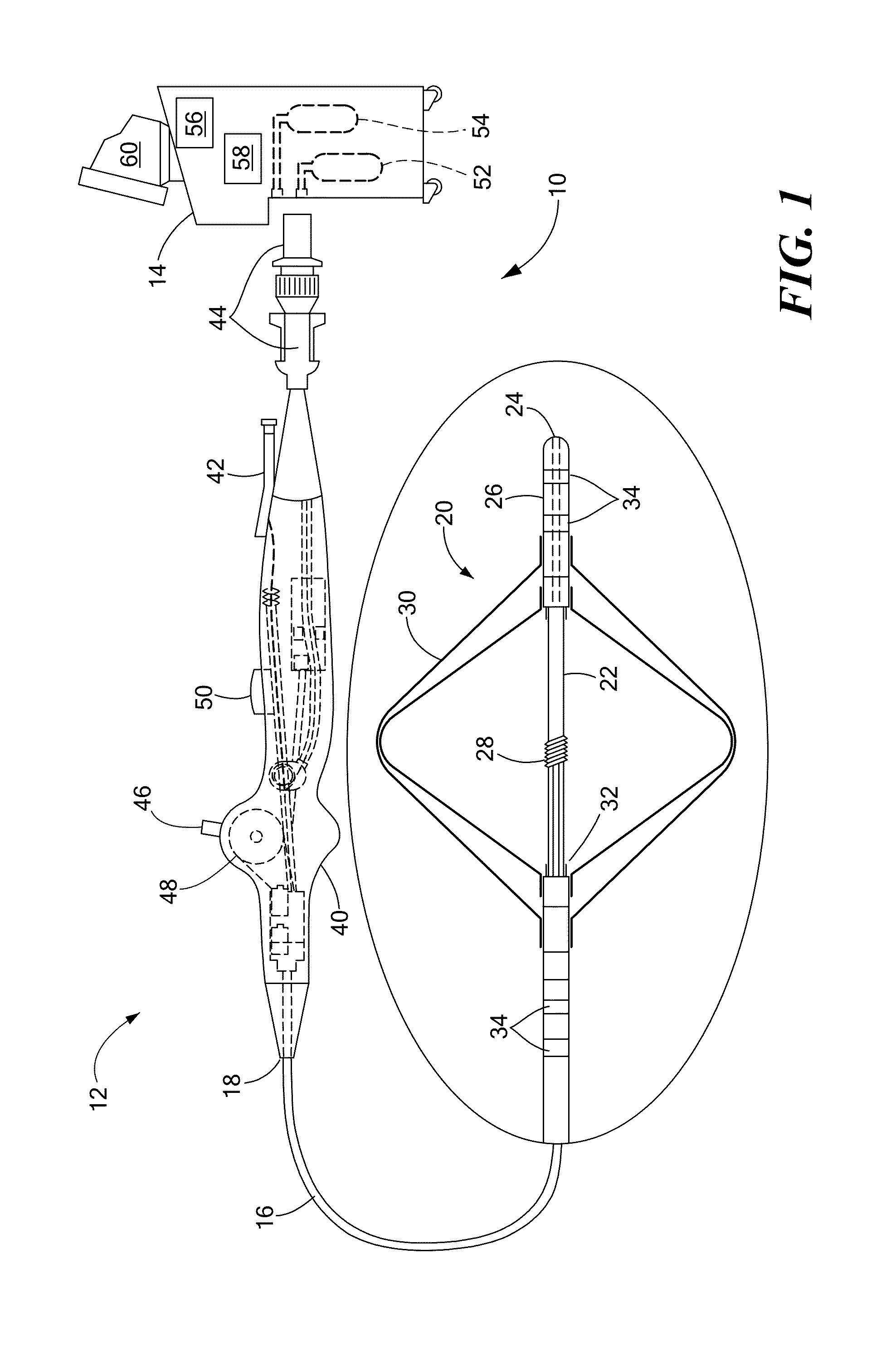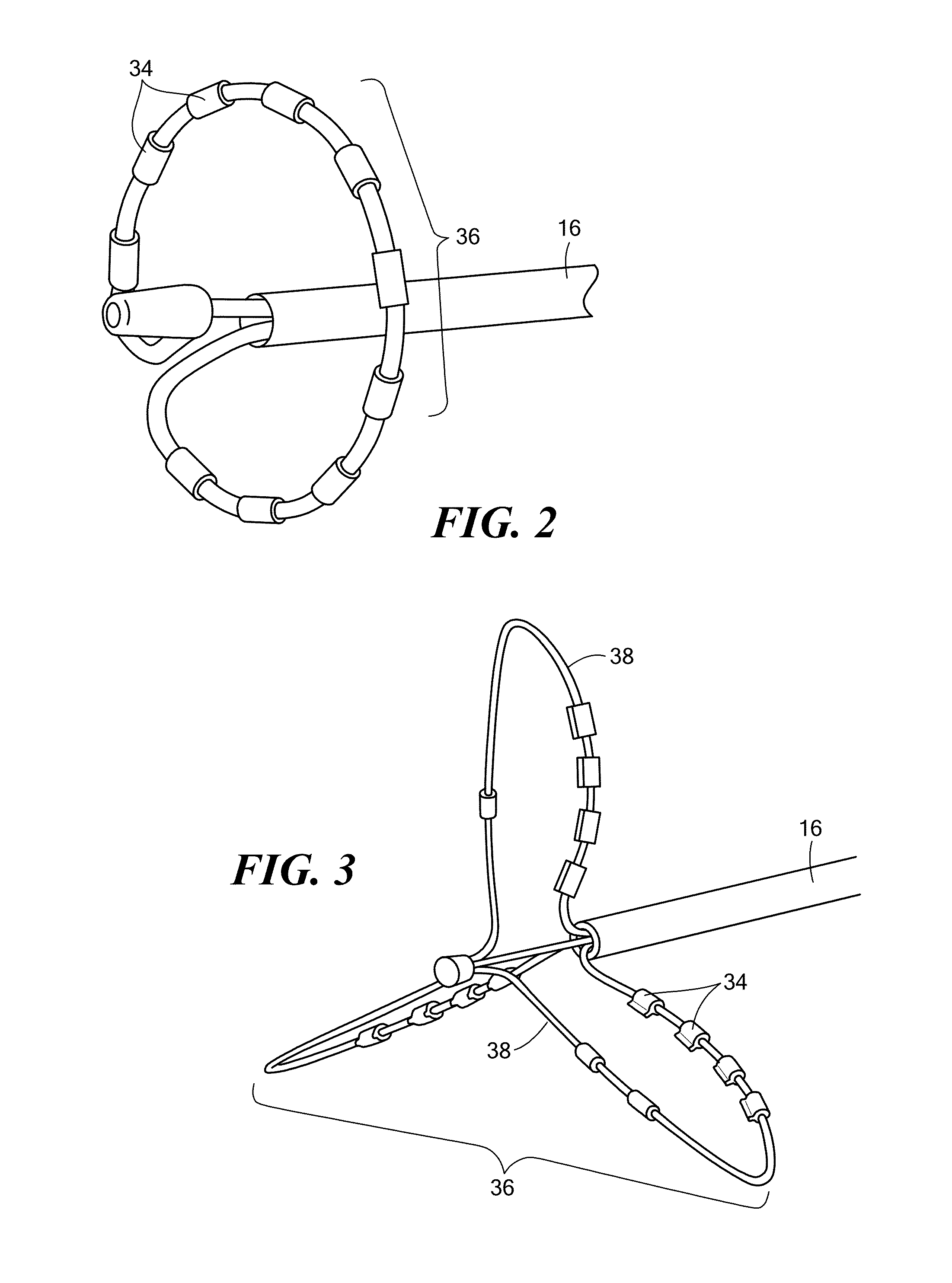Methods for simultaneous cardiac substrate mapping using spatial correlation maps between neighboring unipolar electrograms
a mapping method and a technology for cardiac substrates, applied in the field of simultaneous mapping of cardiac substrates, can solve the problems of difficult to determine difficult to locate the best site for ablation, and difficulty in determining the source of an arrhythmia,
- Summary
- Abstract
- Description
- Claims
- Application Information
AI Technical Summary
Benefits of technology
Problems solved by technology
Method used
Image
Examples
Embodiment Construction
[0024]Substrate mapping, sequential or simultaneous, may be used to identify arrhythmia circuits that are often the targets of ablation. Sequential mapping may involve using a roving catheter probe to record electrical activity, such as potentials, voltages and electrograms, at a time and point within the myocardium, and then moving the catheter to another point to record electrical activity at a different subsequent time. Simultaneous substrate mapping may involve using a multi-electrode basket catheter to record electrical activity simultaneously over multiple points within a region of mapping. The processing of the recorded electrical information helps identify the arrhythmia circuit.
[0025]Conventional mapping involves extracting cardiac activation times by picking up points of deflection or steepest negative slope, and displaying the times over a surface (isochronal map). The patterns during an arrhythmia are observed. For example, an observed pattern may include a rotor around ...
PUM
 Login to View More
Login to View More Abstract
Description
Claims
Application Information
 Login to View More
Login to View More - R&D
- Intellectual Property
- Life Sciences
- Materials
- Tech Scout
- Unparalleled Data Quality
- Higher Quality Content
- 60% Fewer Hallucinations
Browse by: Latest US Patents, China's latest patents, Technical Efficacy Thesaurus, Application Domain, Technology Topic, Popular Technical Reports.
© 2025 PatSnap. All rights reserved.Legal|Privacy policy|Modern Slavery Act Transparency Statement|Sitemap|About US| Contact US: help@patsnap.com



